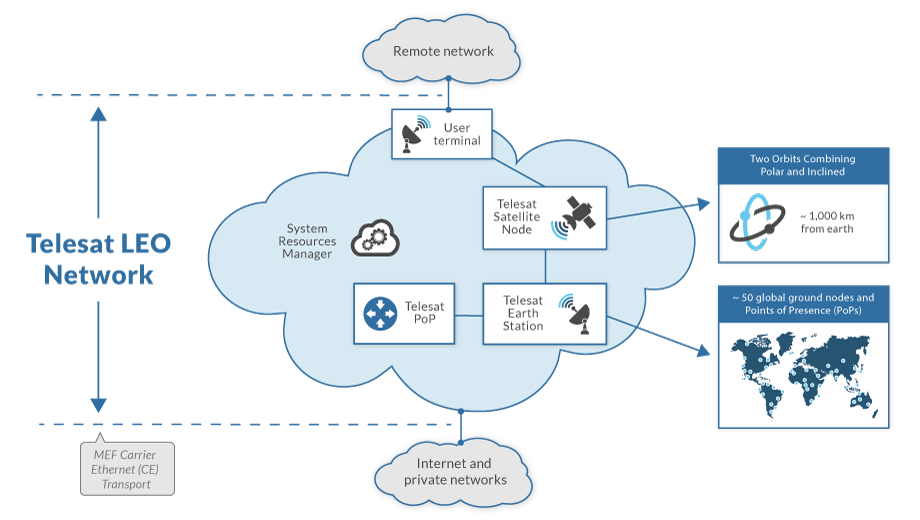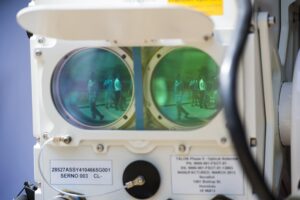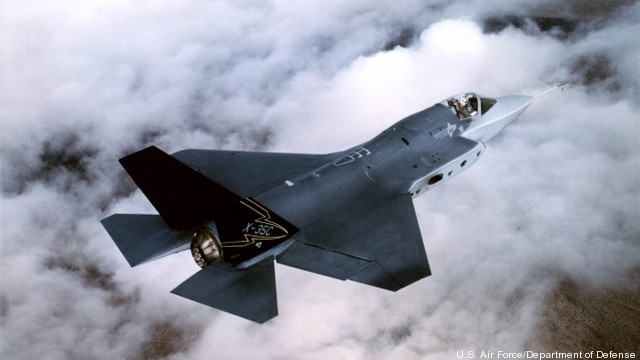WASHINGTON: With the military’s terrestrial wireless networks threatened by Russian and Chinese jammers, Pentagon R&D chief Mike Griffin is keenly interested in communicating in space with low-powered laser beams instead of radio waves. The last time the military tried to build laser communications satellites was a disaster known as TSAT, a five satellite constellation cancelled in 2010. Nine years later, the technology has advanced so far that multiple private companies — including SpaceX — see big profits in launching large numbers of laser comsats for civilian use. Can military messages hitch a ride instead of reinventing the wheel?
“The market is telling us that this is commercially viable,” said Don Brown, general manager of government services at Telesat, which plans to have a constellation of optical satellites operating in Low Earth Orbit (LEO to the cognoscenti) in just three years. “We’re running this huge mesh network in space, [as of] 2022, where military assets can come and join that network.”
Now, the private sector prefers to call this technology “optical” communications instead of “laser” because, well, the word “laser” makes people think of stuff blowing up.
“Why don’t you just say laser communications?” said Barry Matsumori, CEO of BridgeSat. “Because a large community goes, ‘ah, laser equals thousands of watts, high energy.’ No, no, no, we are single-digit, low energy.”
But you can do a lot with a little energy, because laser beams don’t spread out and lose power as rapidly as radio waves do. “We’ve built a system that’s more than 100 gigabits per second,” said David Czajkowski, CEO of Space Micro Inc. For scale, that’s almost four times as fast as the cancelled TSAT was supposed to be, and not in a massive military-unique satellite. “A modem is the size of two Dells on top of each other, and we’re able stack these up … to a terabit. It’s integrated on a satellite and it’ll be flying later this year,” Czajkowski said.
Cloudy Weather
Now, the private sector’s currently talking about satellites communicating to other satellites with lasers, though the vacuum of space. That should dramatically increase both bandwidth — the reason commercial users are so interested — and security against eavesdropping or jamming — of particular interest to the military.
But the Telesat network will still rely on traditional radio-frequency communications between the satellites in orbit and the users on the ground. That creates both a potential chokepoint for bandwidth and a vulnerability that jammers can attack. Why not close that gap with lasers too? Well, while tightly focused laser beams are much harder than radio waves for a human adversary to detect, listen in on, and disrupt, they have a much harder time getting through natural interference in the atmosphere: Even cloud cover can stop them.
“Optical is not 100 percent available once you hit the atmosphere,” said Linda Thomas, an award-winning optical communications scientist at the Navy Research Laboratory. “I always see optical as an augmentation to existing RF networks; anybody who says (that) inside the atmosphere optics will replace RF, it’s just not true.

Naval Research Laboratory researcher Linda Thomas (third from left) and collaborators receiving their $45 million ARAP prize.
“The challenge with laser com in the past is we’ve had a lot of component builders that want to build the high bandwidth widget,” Thomas said. “This is a watershed moment for laser com. The technology at the component level is at the maturity that we can start fielding … but you still need the right team at the engineering level to put that whole system together.”
A laser communications network will need not only the lasers themselves, but sensors to detect cloud cover, weather models to predict where those clouds are going, and sophisticated network-management software to route signals through patches of clearer sky.
Satellite-to-satellite links are definitely easier than satellite-to-ground, Matsumori agreed, but there are “a lot of advanced techniques” that should fix the problem. The simplest fix is just to have more ground stations so someone, somewhere always has a good shot at the satellite. That sounds expensive, but it turns out equipment for transmitting and receiving low-powered lasers can be cheaper, smaller, and easier to power than comparable radio-wave systems.
That lasers coms gear requires less money, room, and power than radio is also a big advantage for satellites, where every pound lifted into orbit is precious. Even if you still have to rely to radio for the ground-to-space link, you don’t need radio on every satellite. Once Telesat’s constellation is up, Brown said, “you don’t have to carry RF [radio frequency] gear on DoD mission spacecraft.”
“We are racing ahead,” Brown said. “It’s going to look really different in about 10 to 15 years.”
‘The bad day’: DISA’s forthcoming strategy prepares for wartime coms
“It’s great to have internet day to day in peacetime,” said Lt. Gen. Robert Skinner, director of the Defense Information Systems Agency, “but it’s more imperative to have it when bullets are flying.”





























